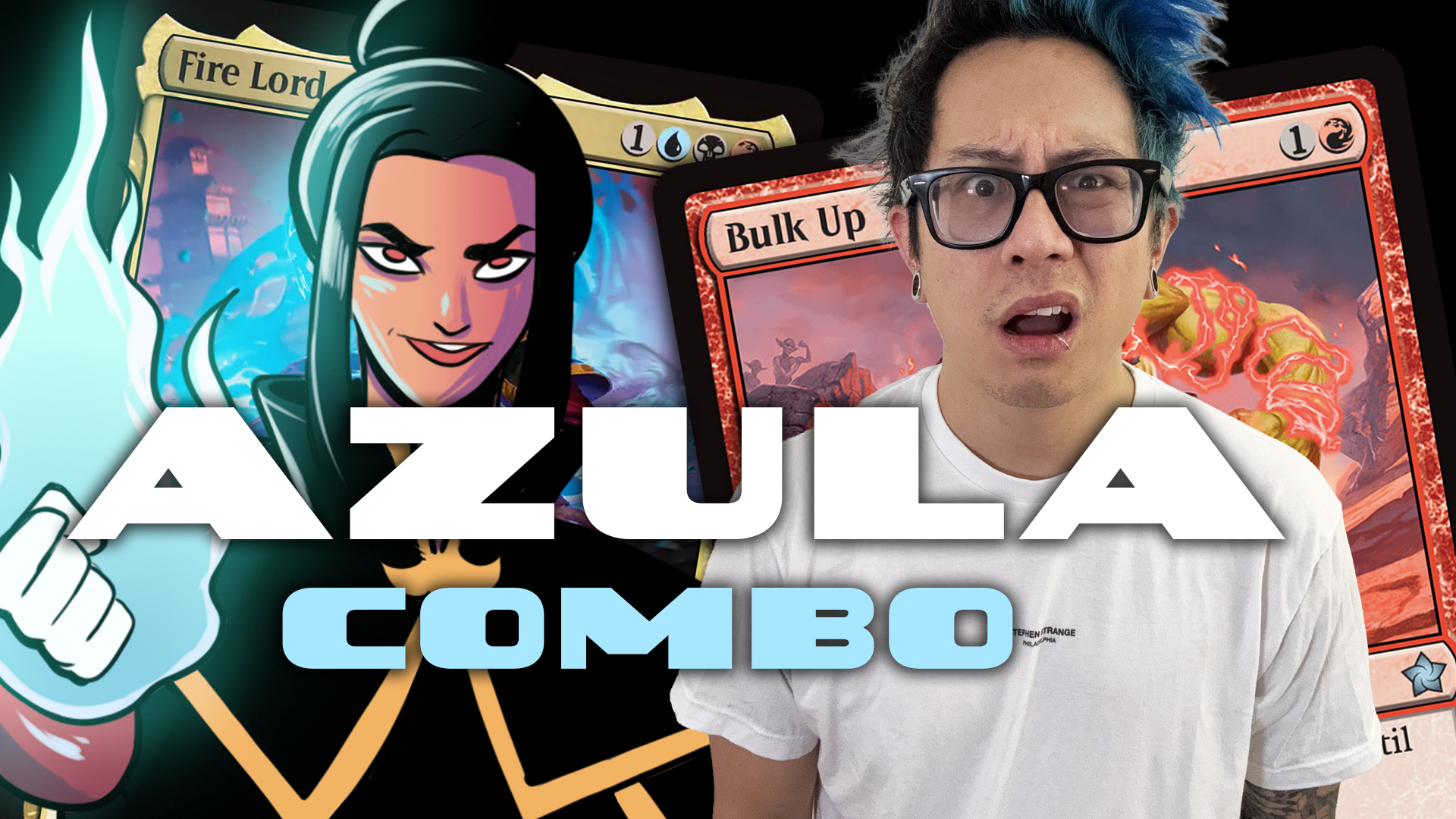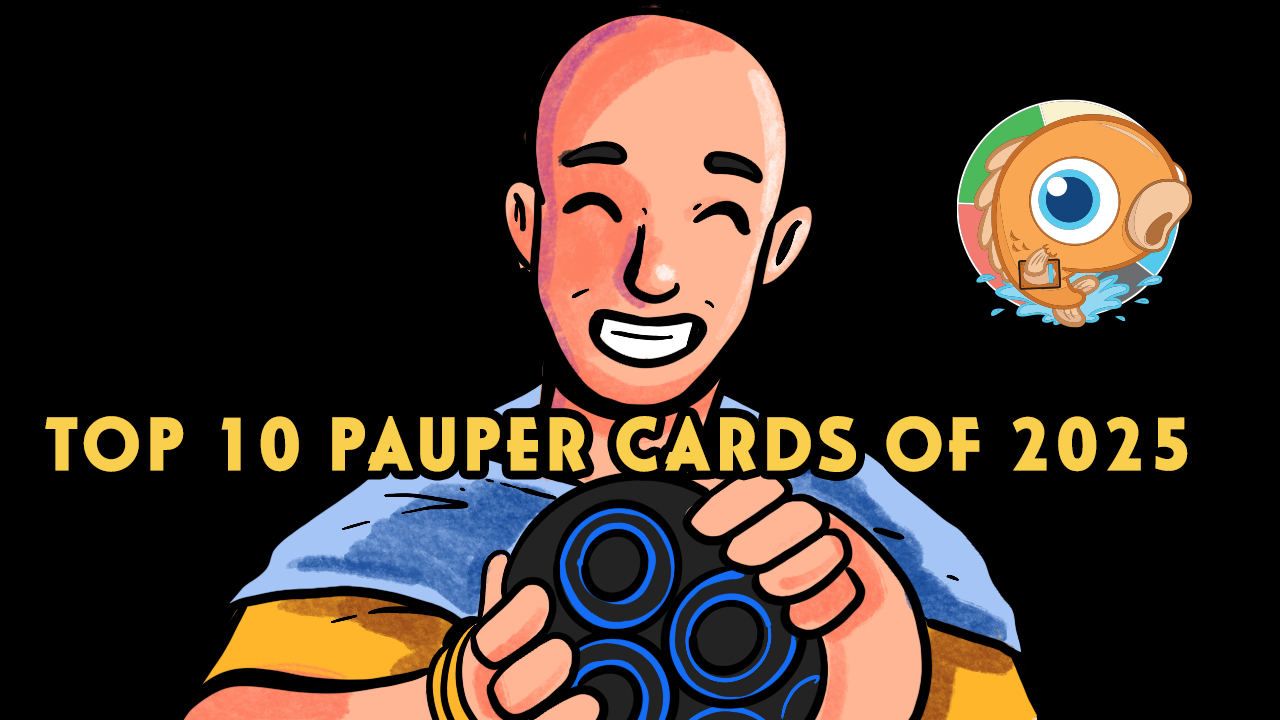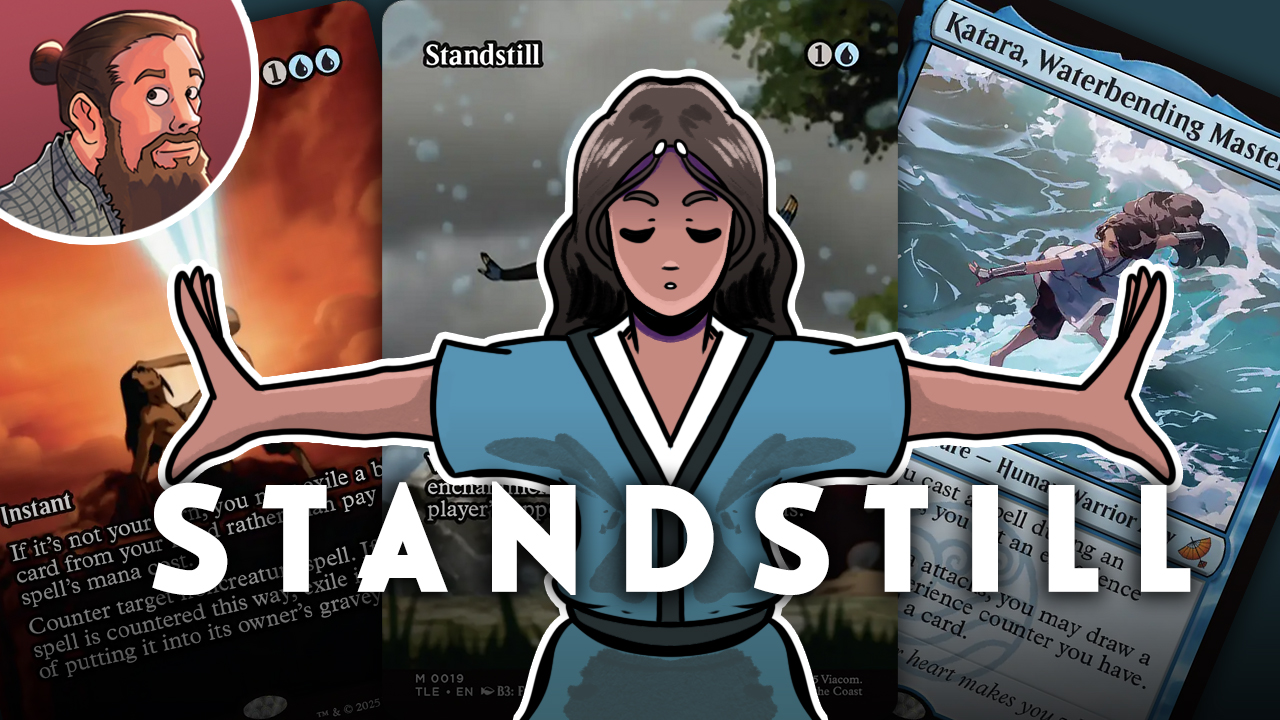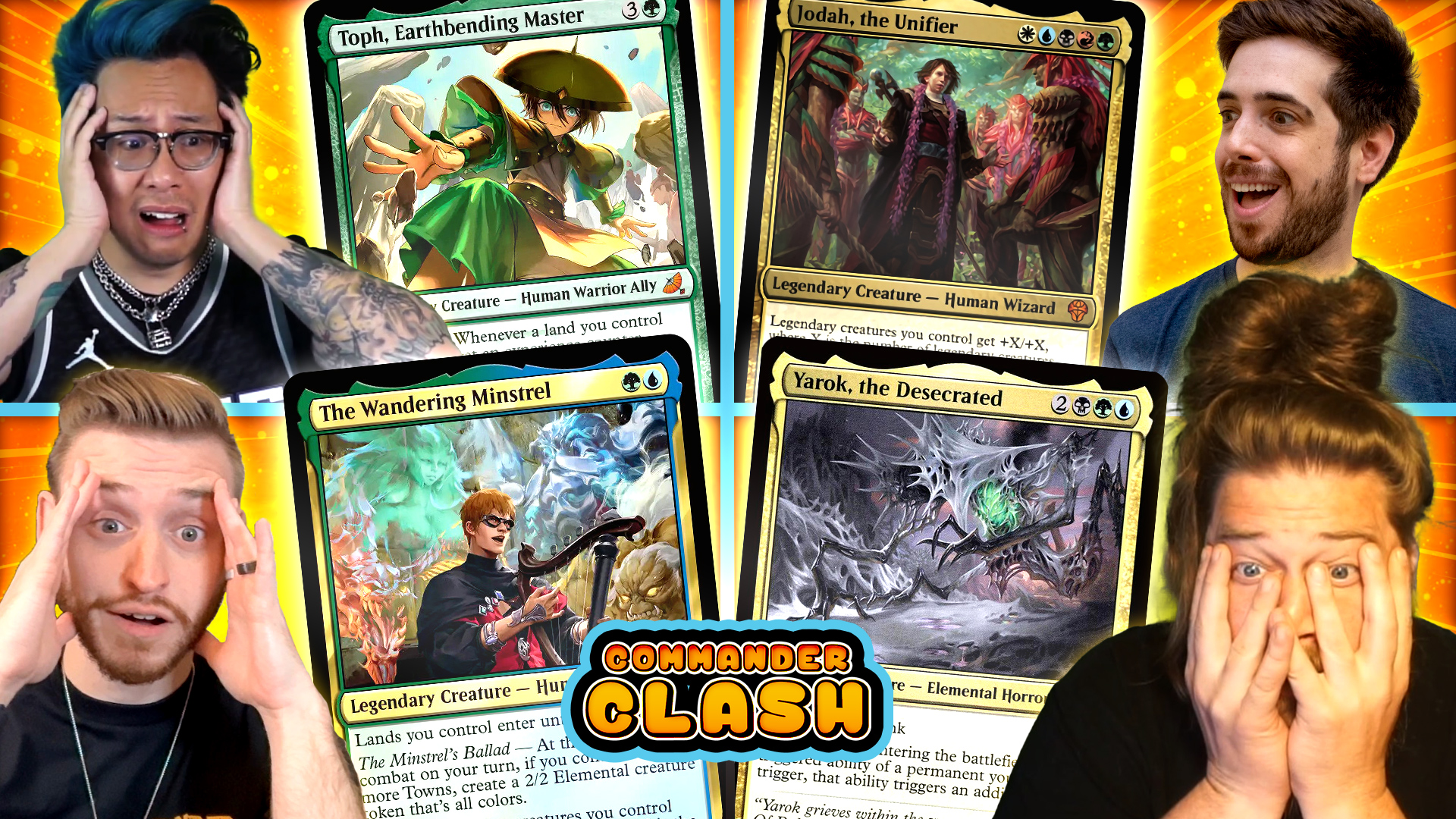Drafting for Value
Along with writing articles, buying/selling collections, and recording videos, the one thing I do most in Magic is play limited. While for me cube drafting is the apex of the Magic experience, I'll play just about any limited format. The games are fresh every time, there is a certain scratch-off thrill to opening a pack and hoping for a valuable rare or mythic, and finding new decks and synergies is tons of fun. Even when I'm drafting, I can't stop thinking from a value-oriented, financial perspective. For me, winning isn't simply going 3-0 in my pod, it's coming away from the draft with the most value possible given my seat.
As a result, I've bashed my head against the wall for months trying to come up with a way to apply Wins Above Replacement (WAR) to limited. If your not familiar with WAR, it's a sabermetric method used in sports for comparing a players performance against the expected performance of a "replacement level" (i.e. the "league average") player. Basically, it's an attempt to quantify how much a player is worth to the team as a whole, answering "if you replaced All-Star Player X with Joe Schmoe League Average Player Y, how many less games would the team win this season?"
Figuring out how to apply WAR to limited is the holy grail of understanding value and rare drafting. While pretty much everyone knows that drafting a $30 Narset Transcendent is the right move value-wise even if you are playing a RB Dash deck, it gets a lot trickier when you are talking about a $3-$5 card. Unfortunately, I'm not sure it's possible to apply WAR to Magic. In a sport like baseball, it's much easier to determine league average (or replacement level). You have a ton of stats, and you can pretty much build a model of an average player based on how many hits they get, how many errors they make, and numerous other stats.
In Magic, we have two problems: First, the value of a card is very dependent on your deck. In baseball, a player that hits 50 home runs will likely perform the same for the Yankees, Red Sox, Mets or any other team. In limited, Brutal Hordechief is a 50 home run hitter in an aggressive BW or Mardu deck, a league average player if your a BG Midrange deck (where he is just a Hill Giant) or a bench player if you are UW Control with 8 creatures. The other problem is we don't have any real statistics to determine replacement level. I've bounced the problem off a few people and gotten several suggestions, although none that I feel completely comfortable with (if you have some ideas on applying WAR to limited, make sure to let me know in the comments). As a result, until this problem is overcome, we are stuck using less scientific methods for value drafting.
How Much is the Draft Worth
While this varies a quite a bit depending on where you draft and who you draft with, we'll be using the two big Magic Online draft formats, single elimination 8-4 and pack-per-win Swiss, for our example. At the same time, we are going to give packs a constant value of $3 both for buying and selling. While the actual value of a pack changes from day to day and format to format, for our purposes, having a consistent number is more important than having the "right" number. Plus, it would be nice if this information applied to all limited formats, and not just the current DTK/DTK/FRF. Based on our numbers, it costs $11 to draft ($9 for the three packs plus $2 tix entry fee). This is the same for 8-4's and Swiss.
In an 8-4, only two players end up with prizes. First place takes home 8 packs (worth $24) and second place gets 4 packs (worth $12). The other six players end up with nothing except the cards they open. In Swiss, four packs are given away each round to match winners. This leaves one player at 3-0 with 3 packs (worth $9), three players at 2-1 with 2 packs (worth $6), three players at 1-2 with 1 pack (worth $3), and one player at 0-3 with nothing.
Understanding how a draft pays out is important because it has a large impact on when value drafting is appropriate. In single elimination, the difference between winning and losing in the second round is $18 (the average of the first and second place payout). In Swiss, the difference between winning and losing in the same round is only $3. This is a very meaningful distinction between the two formats.
Example 1:
It's a few years ago and your drafting triple Innistrad a few weeks after the set released. You're building the Spider Spawning deck, and it's looking awesome. The only problem is, you haven't seen a single Spider Spawning yet, so at the moment, your deck does literally nothing. You open a pack highlighted by the following two cards:
![Liliana of the Veil [ISD]](http://cdn1.mtggoldfish.com/images/gf/Liliana%2Bof%2Bthe%2BVeil%2B%255BISD%255D.jpg)
![Spider Spawning [ISD]](http://cdn1.mtggoldfish.com/images/gf/Spider%2BSpawning%2B%255BISD%255D.jpg)
At the time, Liliana was worth $25, Spider Spawning was worthless.
Let's say this draft is an 8-4. For these calculations, we'll assume that Liliana of the Veil is a replacement level card for your deck. It neither adds or takes away from your chances of winning. With the Spider Spawning you think your deck has a 75 percent chance of reaching the finals, which is worth $18. Without the Spider Spawning, you put your odds of cashing at 10 percent. This means the value of Spider Spawning is $11.70 (0.75*18=$13.50, 0.10*18=$1.80, $13.5-$1.8=$11.70). The thing is, the value of Liliana of the Veil is $25. In fact, given that first place in the draft is only worth $24, even if picking the Liliana of the Veil put your odds of wining the draft all the way down to zero percent, it would still be the correct pick. You would be better off drafting the Liliana of the Veil, dropping from the event, and joining another draft than picking the Spider Spawning.
If you were presented this same choice in a Swiss draft, the numbers favor drafting Liliana fo the Veil even more heavily. This is because the value of the Spider Spawning is actually much less in a Swiss draft, since the difference between going 3-0 and 0-3 is only $9 instead of $24.
Admittedly, this is an easy example. It would be difficult to constructed a pack/deck combination where passing the Liliana of the Veil was correct (although it might be possible thanks to double-faced cards; a pick between Liliana of the Veil and Garruk Relentless would be close, especially if you were solidly in green and not in black). Despite its simplicity, it does give us a rule to follow: if you ever get a chance to pick a card whose value is more than winning the draft, it's always correct to take it. In fact, just being worth your entry fee ($11) is enough to make it a slam dunk. If you can pay for the draft with the card/cards you open, you're basically on a free roll and any prizes you win are pure profit.
Example 2:
This time you are playing DTK/DTK/FRF. You are heading into pack three with a solid W/G deck highlighted by Dragonlord Dromoka and Den Protector. There isn't one specific card you need, but you are a little short on creatures and playables in general. You open your Fate Reforged pack and see these options staring back at you:



So what is the pick? Does it matter if you are in an 8-4 or a Swiss? I'll give you a minute to think about it while you look at this random price chart, and then we'll break it down.
In this situation we have three options: Clearly the best card for the deck is Elite Scaleguard, one of the "mythic uncommons" of FRF. Even though we were not looking for any specific cards, this is probably one of the best we could have opened — an on-color bomb creature. Figuring out just how many wins Elite Scaleguard is worth is difficult (this goes back to the WAR problem we talked about before), but let's say, for the sake of argument, that having the white uncommon in your deck is worth one match win compared to a "replacement level" card.
So how much is this match win worth? In Swiss it's 3 tix. In an 8-4, it's a little more complicated because it depends on the match you win. Winning the first round is worth nothing, winning the second round is worth a minimum of $12, and winning the third round is worth another $12. While I'm sure there is a mathy way of doing this (to account for all the possibilities), let's take the easy way out an just say that a match win in an 8-4 is worth $8 (total value of winning all three rounds $23 divided by number of rounds).
This clearly illustrates another rule: rare/value drafting is less worth it in an 8-4 than in Swiss. This doesn't mean you should never rare draft in single elimination, but the way that prizes are handed out clearly reduces the incentive for taking a $4 rare that will sit in your sideboard over a bomby (but valueless) uncommon.
This means that picking Elite Scaleguard is worth $3 in Swiss and $8 in an 8-4 (which actually seems a bit high — maybe it's only worth half a win, which would make the value $1.50 in Swiss and $4 in an 8-4), but what about our other two options?
Windswept Heath isn't going to win us many matches, although since we are GW it will definitely make our deck. Given that there is a real argument as to whether or not fetchlands are any better than gainlands in limited, it's hard to get too excited about the Windswept Heath. This said, it does improve our deck slightly, so lets say that the land is worth 0.05 match win. Of course, you are also getting a card that is worth $4 online, so we need to add this to the calculation as well. Since the 0.05 wins added at a tiny bit of value to the overall equation ($0.15 in Swiss and $0.40 in an 8-4), the total value of Windswept Heath is somewhere between $4.15 and $4.40 depending on the format.
This bring us to Crux of Fate, a card that adds no value (or wins) to our deck, because there is no chance that we actually play it. If we draft it, it will be purely for its value, which online is $2.30.
Putting this all together we have the following value pick orders: For 8-4 the most valuable pick is Elite Scaleguard because it increases our chance of hitting the top-heavy payout, followed by Windswept Heath, and then Crux of Fate. In a Swiss, however, you are better off taking the Windswept Heath since the match win offered by Elite Scaleguard isn't worth that much.
Misinformation
One of the reason I wanted to write this article is because there is a lot of misinformation in the forums about value drafting. Two of the myths that commonly come up in the forums are "if it is worth more than a pack you should always take it" and "if it is worth more than $1 (in swiss) or $2 (in 8-4's) you should always take it." The former isn't actually that bad, as far as rules of thumb go. In many cases it is correct (value speaking) to pick a $4 rare over anything else, although as our examples show, this isn't always the case (especially in 8-4's). A bomb uncommon or signature piece of your deck can be worth more than a pack, especially with the top heavy payout of 8-4's.
The second rule just seems crazy to me. I can understand taking $1-$2 rares out of otherwise blank packs, but taking these over real, playable, important cards will cause you to hemorrhage value in the long run. Winning a single 8-4 is worth 24 $1 rare drafts and even just a single round of Swiss is worth three $1 rare draft. When you are dealing with low-value cards like these, you are almost always better off picking a card for your deck than trying to scrape up $0.50 in value by picking an unplayable rare.
Tips for Gaining Value
So far we have been talking a lot about math and almost exclusively about first picks, but I wanted to wrap up today's article with some general tips for value drafting.
- Remember, this is all about opportunity cost and context. While picking a $4 fetchland over a bomb uncommon is often wrong, picking a $4 fetchland over a replacement level card is always right. Be aware of where you are in the draft and what your option are.
- The late picks are often gold minds. This is especially true of flashback drafts, where there are usually several $1 commons and uncommons. Snapping off a Diabolic Edict that you know isn't going into your deck over a 23rd card that may or may not make your deck is always the right play. Before a flashback draft comes online, I make sure to refresh myself on valuable uncommons and commons, and target these cards in picks 6-15. The set price pages here on MTGGoldfish are a great resource since you can sort by rarity and price.
- I've noticed on Magic Online that people don't really pay attention to foils in limited. As a result, you often see packs with five cards left that are three semi-playable cards, a basic land, and a crappy foil uncommon/common. In these situations, I always, always, always snap off the foil. I don't even care what it is. Even though you can't generally sell these cards for much in-game, when it comes time for redemption, all these late pick foils pay off huge and save a ton of time and effort in putting together a valuable set on the cheap.
- Never pass a foil mythic. Not only are they often worth the price of a draft, but you'll pay a premium if you have to buy these cards from a bot for redemption later.
- How you feel about your deck has a lot to do with when it is right to draft for value. Sometimes you have a train wreck draft and you know heading into pack three that your odds of cashing are about 5 percent. In these situations, I'm always going to snap off whatever money cards I can during the rest of the draft and try to salvage some value. On the other hand, sometimes you feel like your deck is very good. In these instances, I'm more likely to take bombs/removal/etc to try to make it great and increase the odds of a good finish than to rare draft.
Conclusion
Remember the trick to "going infinite" in limited, both in Magic Online and in the paper world, is two-fold. Not only do you need to win, but you need to be value conscious. The idea is to come out of the draft with more value than you started with. If these means making a few "value picks" that you wouldn't make at a Pro Tour, so be it (and actually, you can argue that people drafting at a PT are just taking the best value pick as well — it's just that the payout of the event is so high that picking the best card for your deck always has the most value).
Anyway, that's all for today. Do you have idea idea for applying WAR to limited? What are your techniques for drafting as cheaply as possible? Let me know in the comments, or you can reach me on Twitter (or on Magic Online) @SaffronOlive.
P.S. If you are a fan of limited, don't forget to check out the DTK/DTK/KTK Limited Analysis which just went live on the site yesterday. It's awesome!













